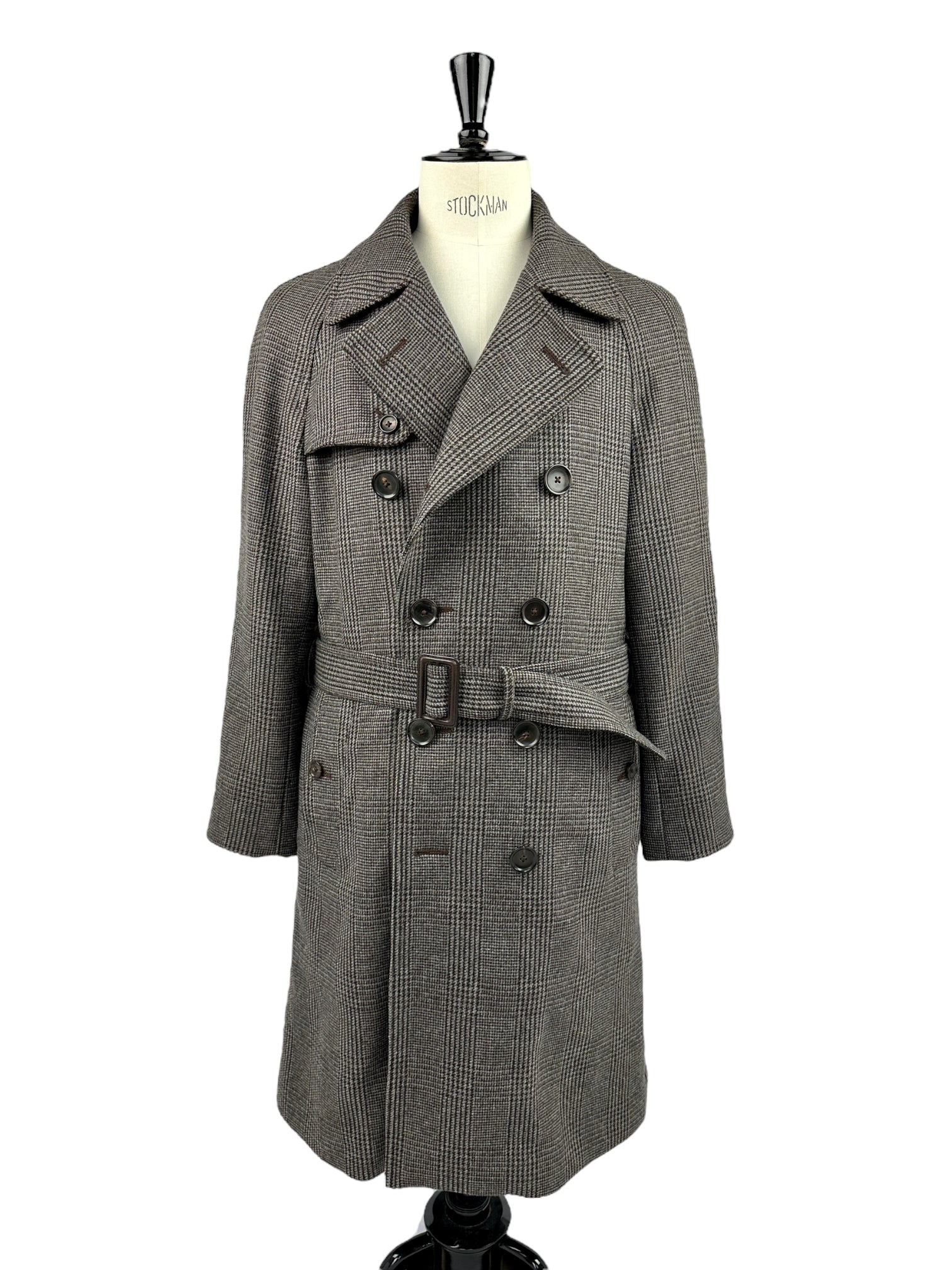
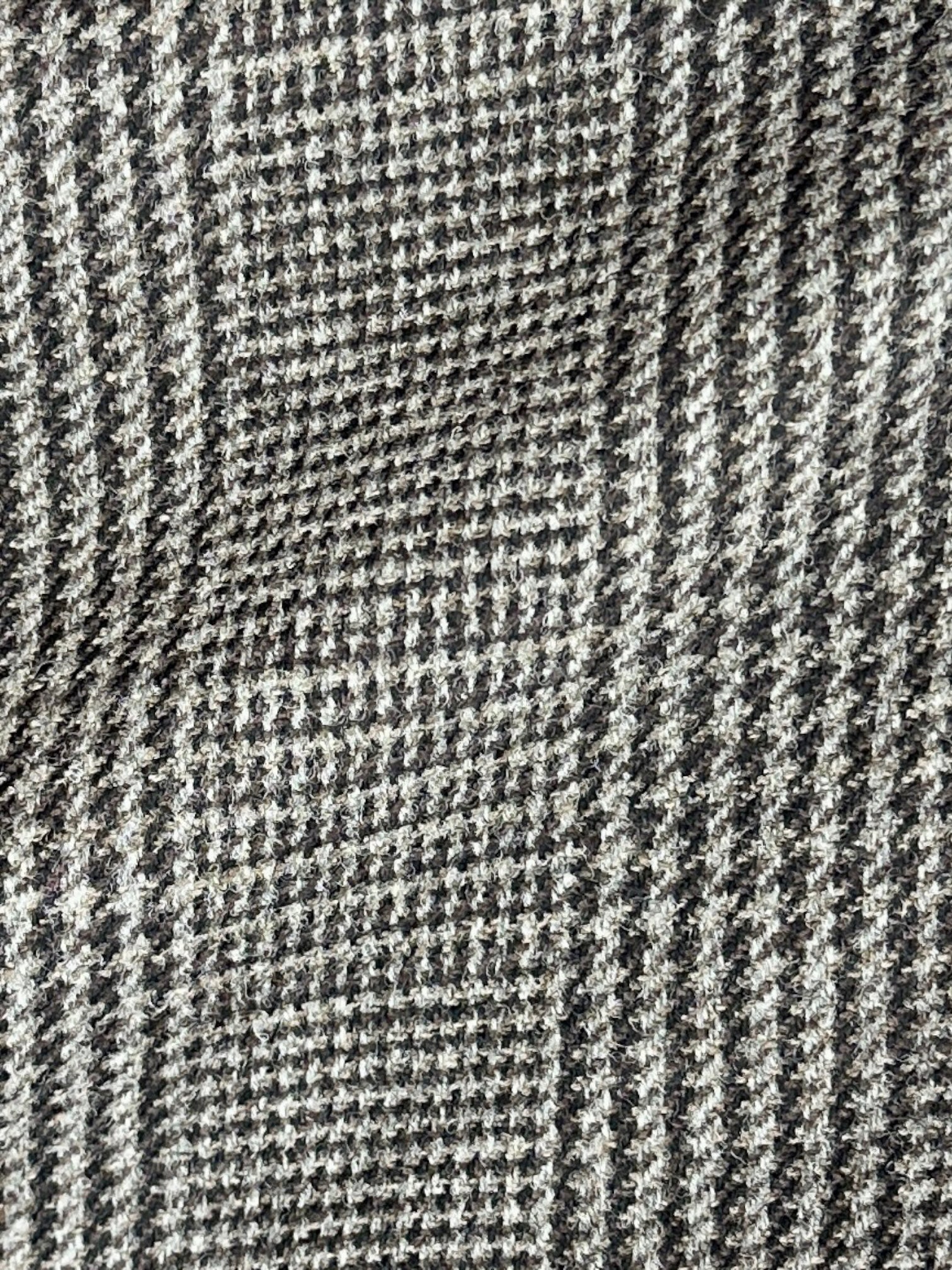
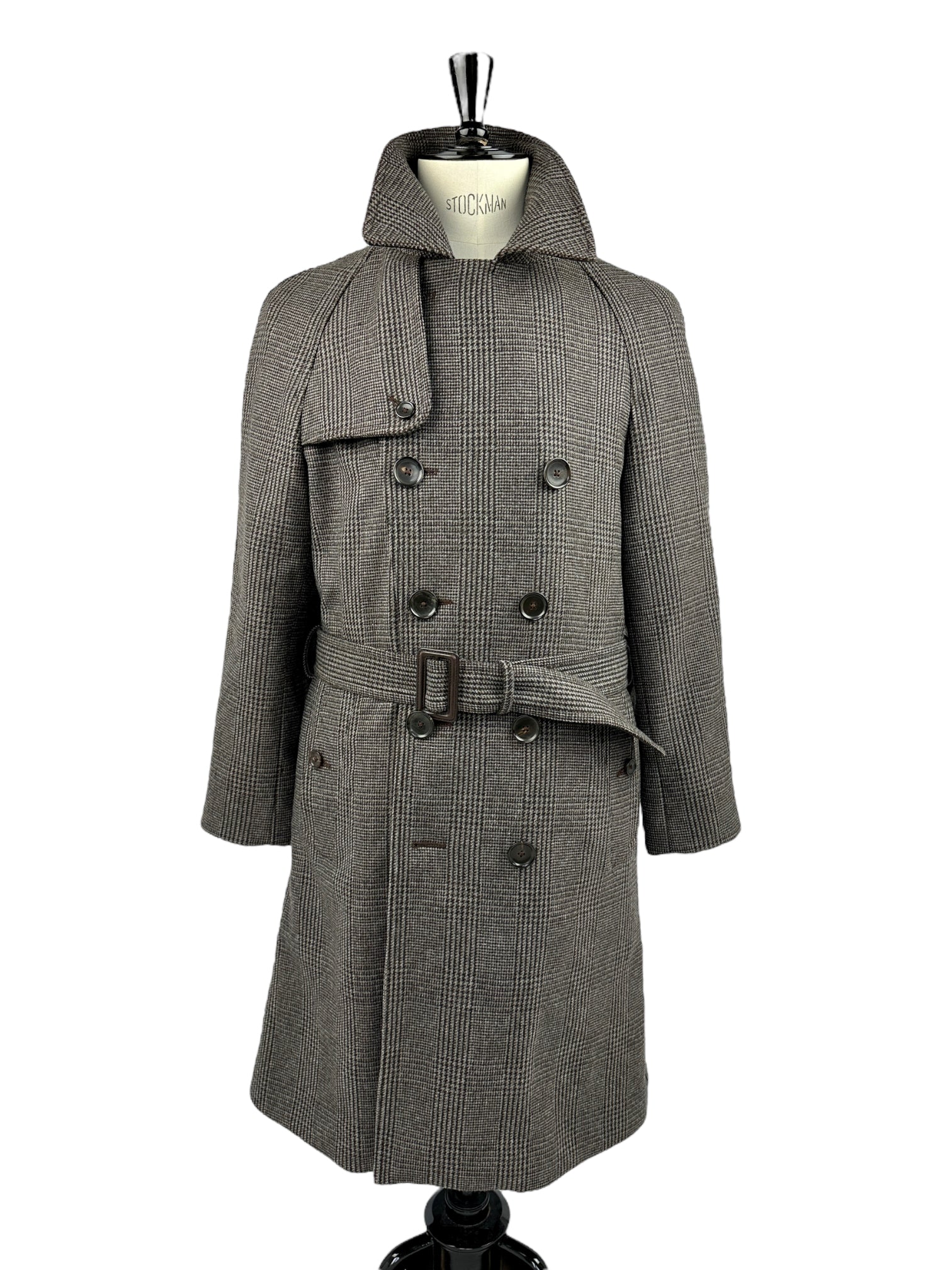

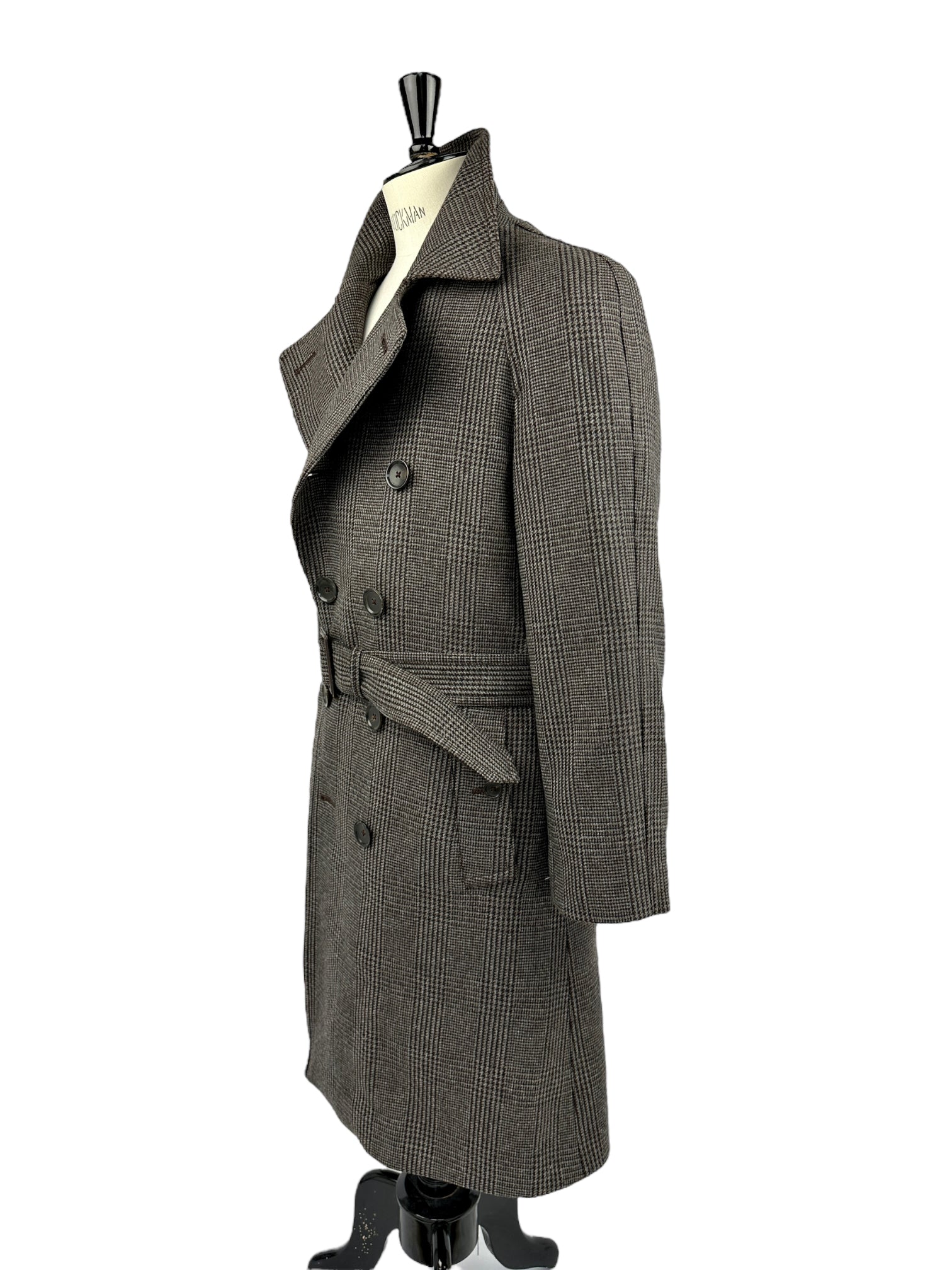
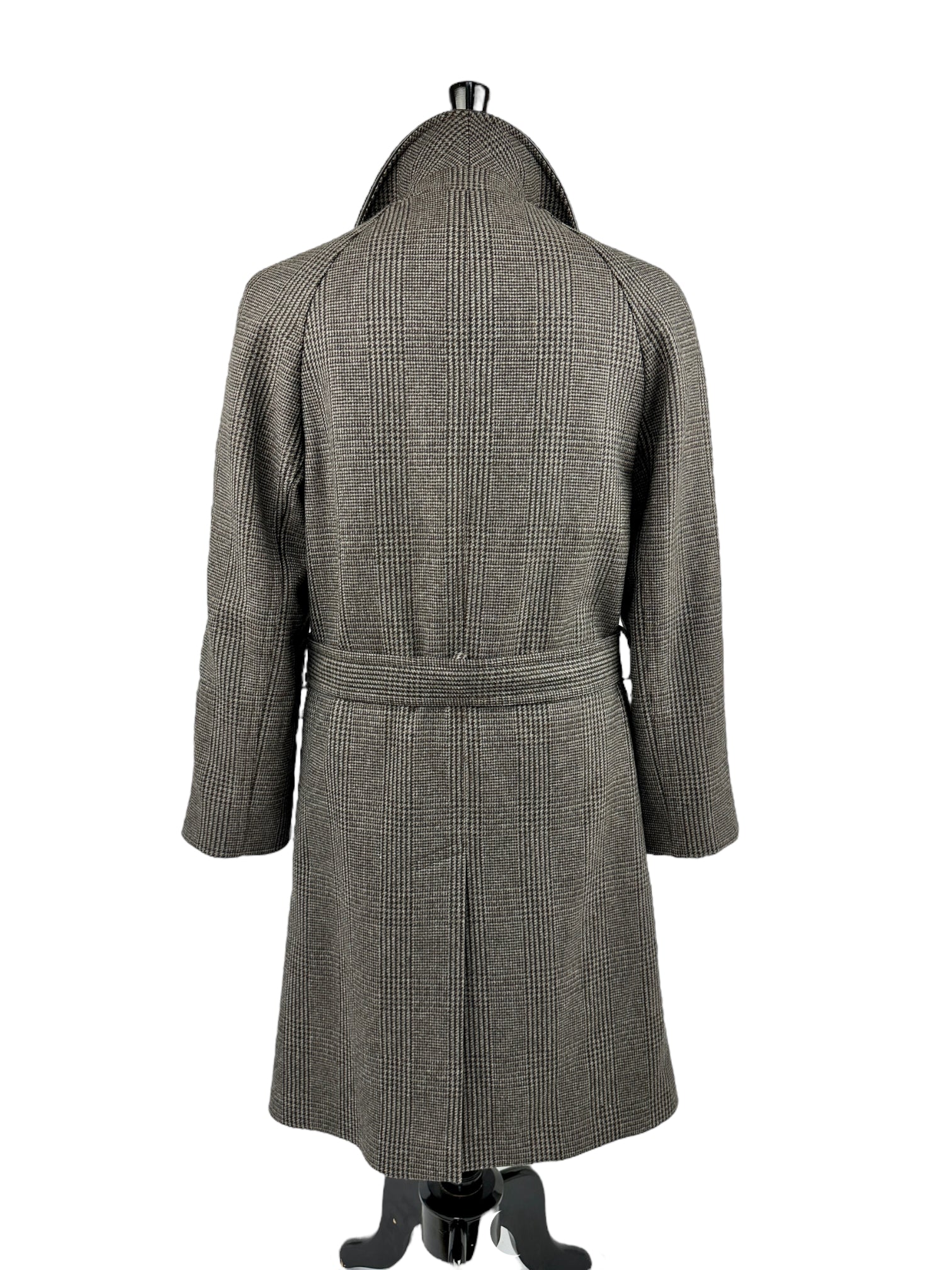
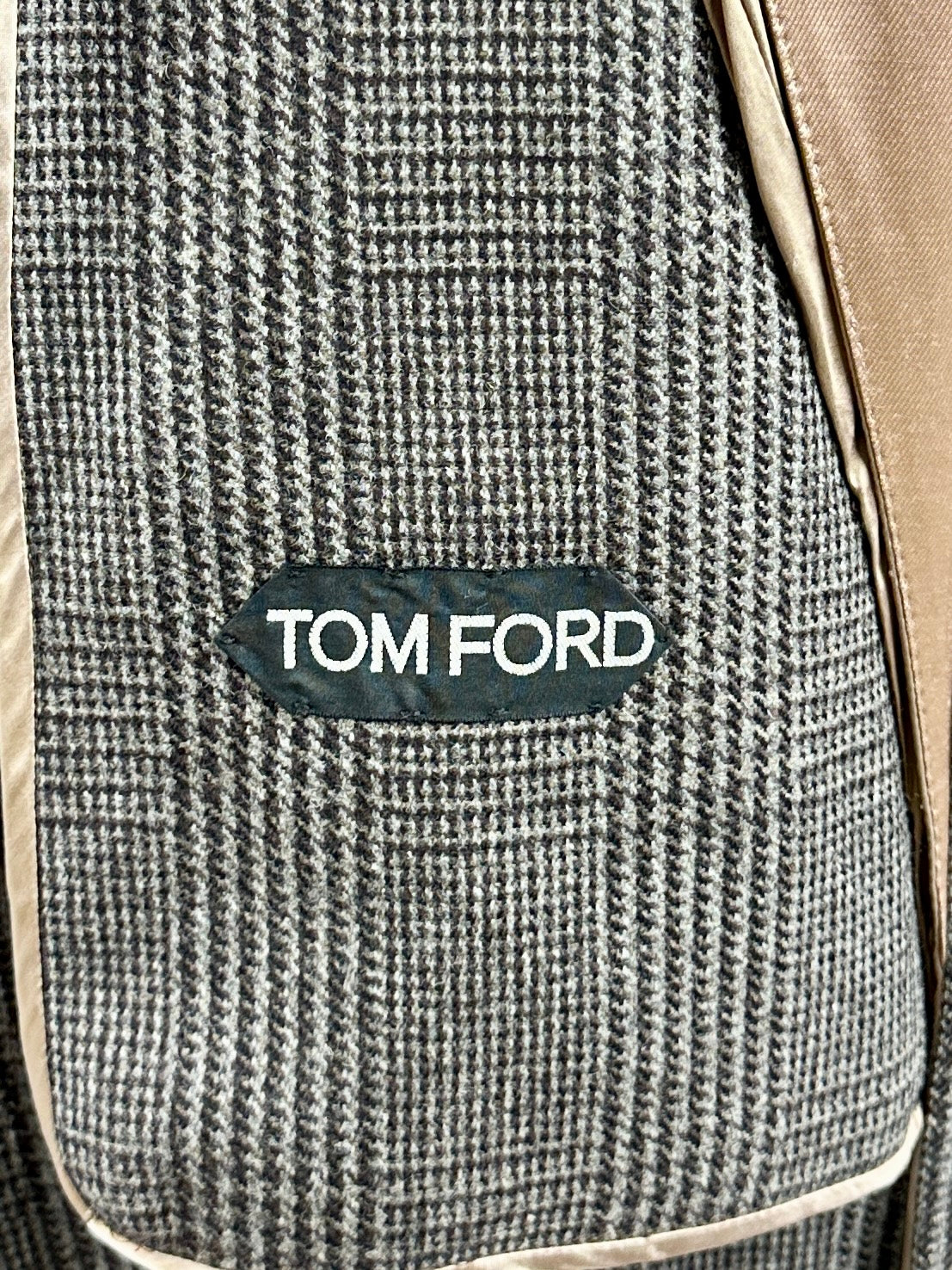
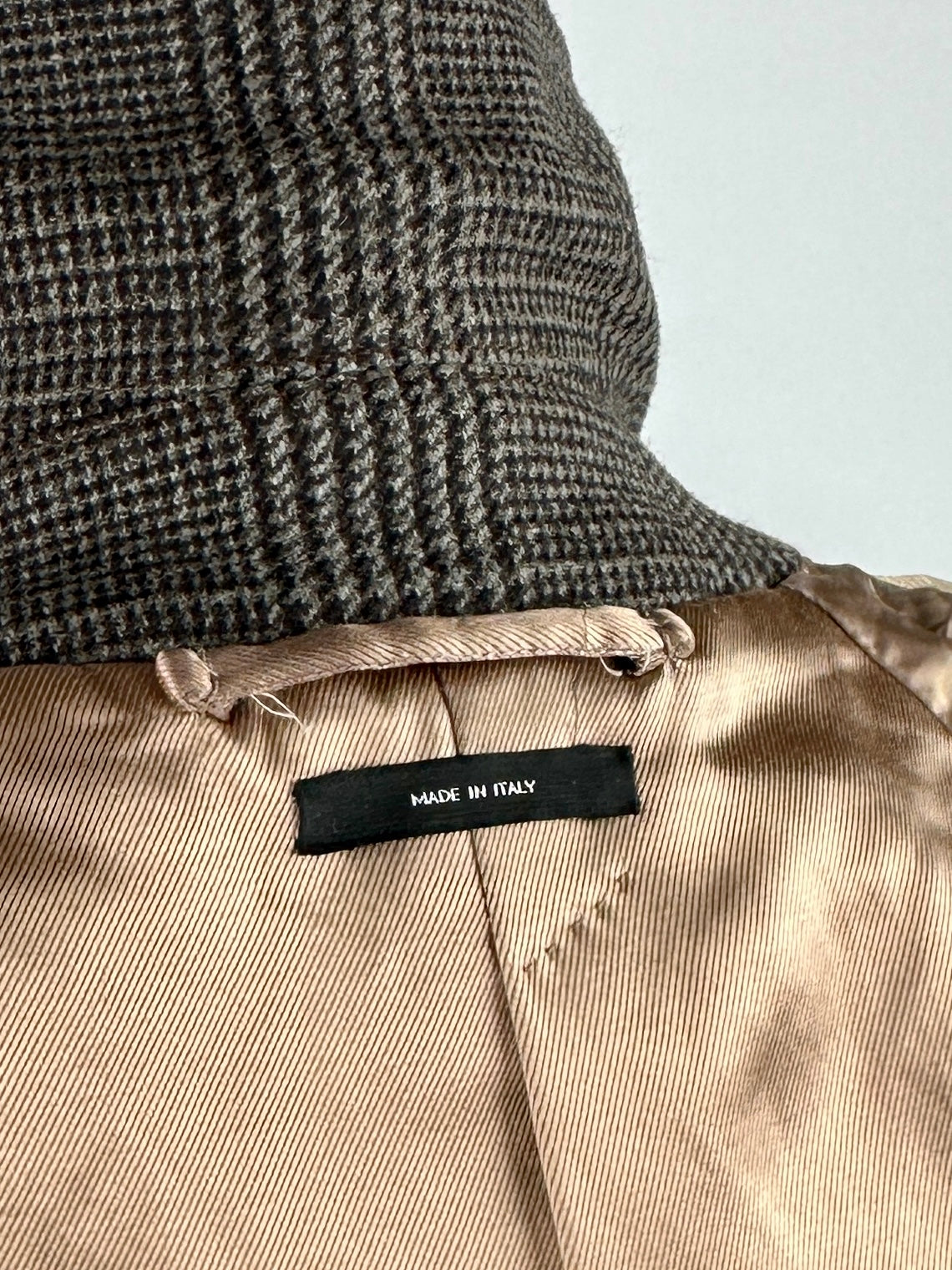
Tom Ford Brown Check Overcoat
48 IT / 38 US / Medium
Crafted from luxury, sturdy wool in a classic Prince of Wales pattern, this overcoat embodies the perfect blend of sophistication and durability. The raglan shoulders ensure a comfortable and flattering fit, allowing you to move with ease while exuding an air of refined style. Equipped with a distinctive gun flap and functional patch pockets, this overcoat combines practicality with a touch of urban flair. Its fully lined interior provides warmth and comfort, making it the ideal companion for chilly days and evenings. Accentuate your silhouette with the accompanying belt, adding a tasteful touch that defines the waistline and enhances the overall elegance of this exceptional garment.
Most of Tom Ford’s garments are manufactured in Italy and Switzerland. A Tom Ford suit takes eight weeks to craft – and the process begins with the choice of fabric. Tom Ford’s wool fabrics are spun in England on 18th-century machines while its wool-silk and wool-cashmere blends are made in northern Italy. A tailor or seamstress devotes nineteen hours of exceptional care to ensure the longevity of the - tailored - garment.
Composition: 100% Wool
Color: Brown
Pattern: Prince of Wales Check
See how we measure our sartorial items
Discover the customization possibilities by visiting our tailor alteration guide
Shipping
- Complimentary shipping on orders over €200 (Netherlands), €500 (EU), and €1,000 (rest of world).
- Orders under these amounts: shipping rates depend on your country.
- Customs duties or import fees may apply and are the customer’s responsibility. The courier may charge additional fees.
Returns
- You have the right to return your order within 14 days of delivery.
- If you wish to return an item, please notify us within 48 hours of receiving your order.
- Return shipping is at the customer’s expense.
- A 10% restocking fee will be deducted from your refund for all returns.
Please carefully review all measurements and quality control notes in the listing before purchasing. Return shipments have an environmental and economic impact. For any questions or if you need help, feel free to contact us before placing your order.
General Note: While we inspect each item to ensure its quality, please note that minor imperfections may be present due to the preloved nature of the garments. We strive to represent every item accurately, but subtle signs of wear may sometimes go unnoticed. We appreciate your understanding and commitment to sustainable luxury.
Choose options








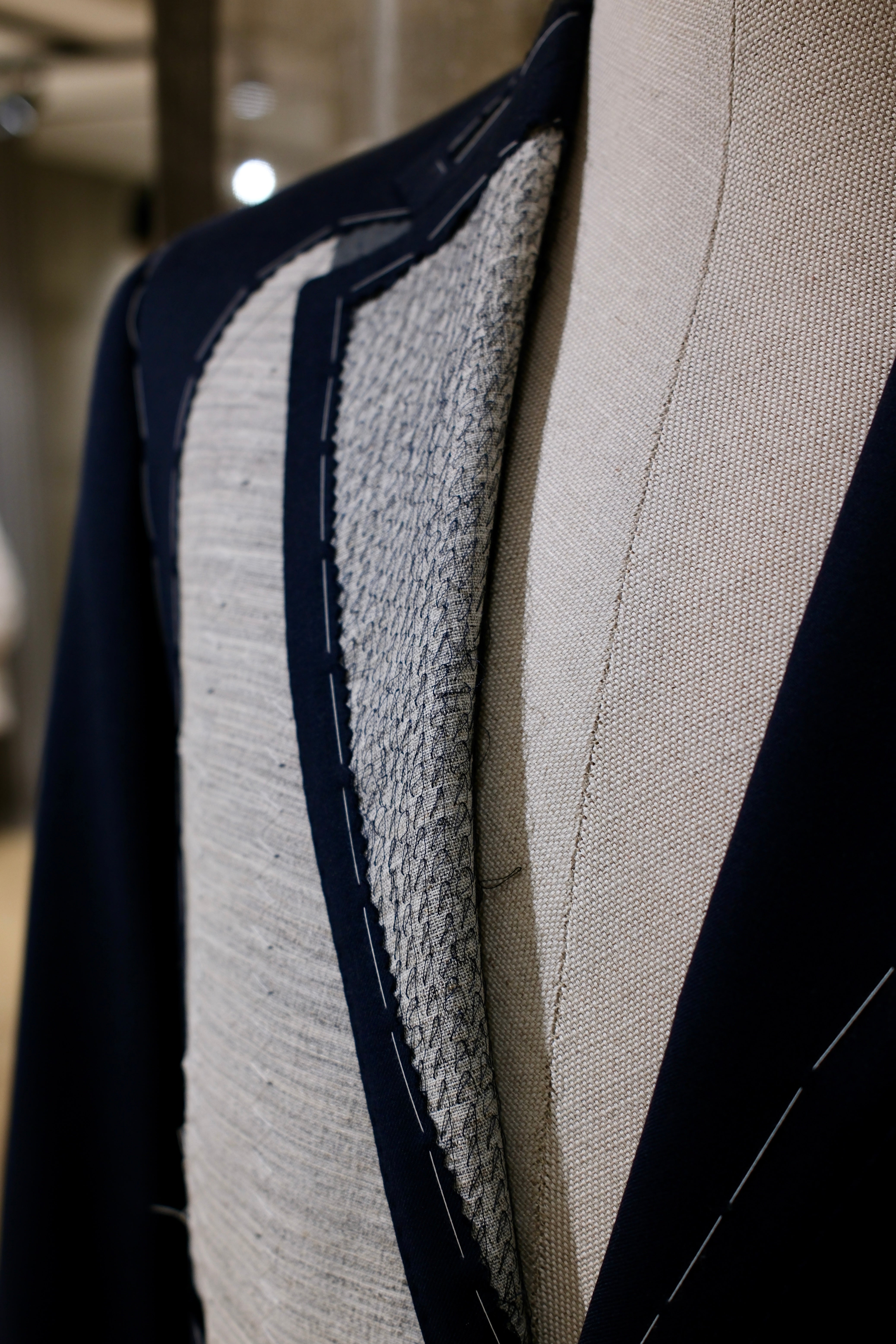
Discover the
Sartorial Details

Full Canvas Construction
A sartorial jacket - or coat - needs an interlining that will help give it shape and mold it. Canvas gives the item a tailored and crafted look. In short, it breathes life into it. Purely technical, canvas is made from either horsehair, wool, mohair or camel hair. It could also be a mix of them all, with varying thickness and weight. The canvas is stitched to the jacket, often by hand, thus making the canvas pieces 'floating' in the middle of the inner and outer cloth. This gives the jacket added flexibility. The canvas runs from the upper parts, all the way down to the end of the jacket. After you wear your canvassed suit for a while, it will begin to take your shape and look incredibly natural.
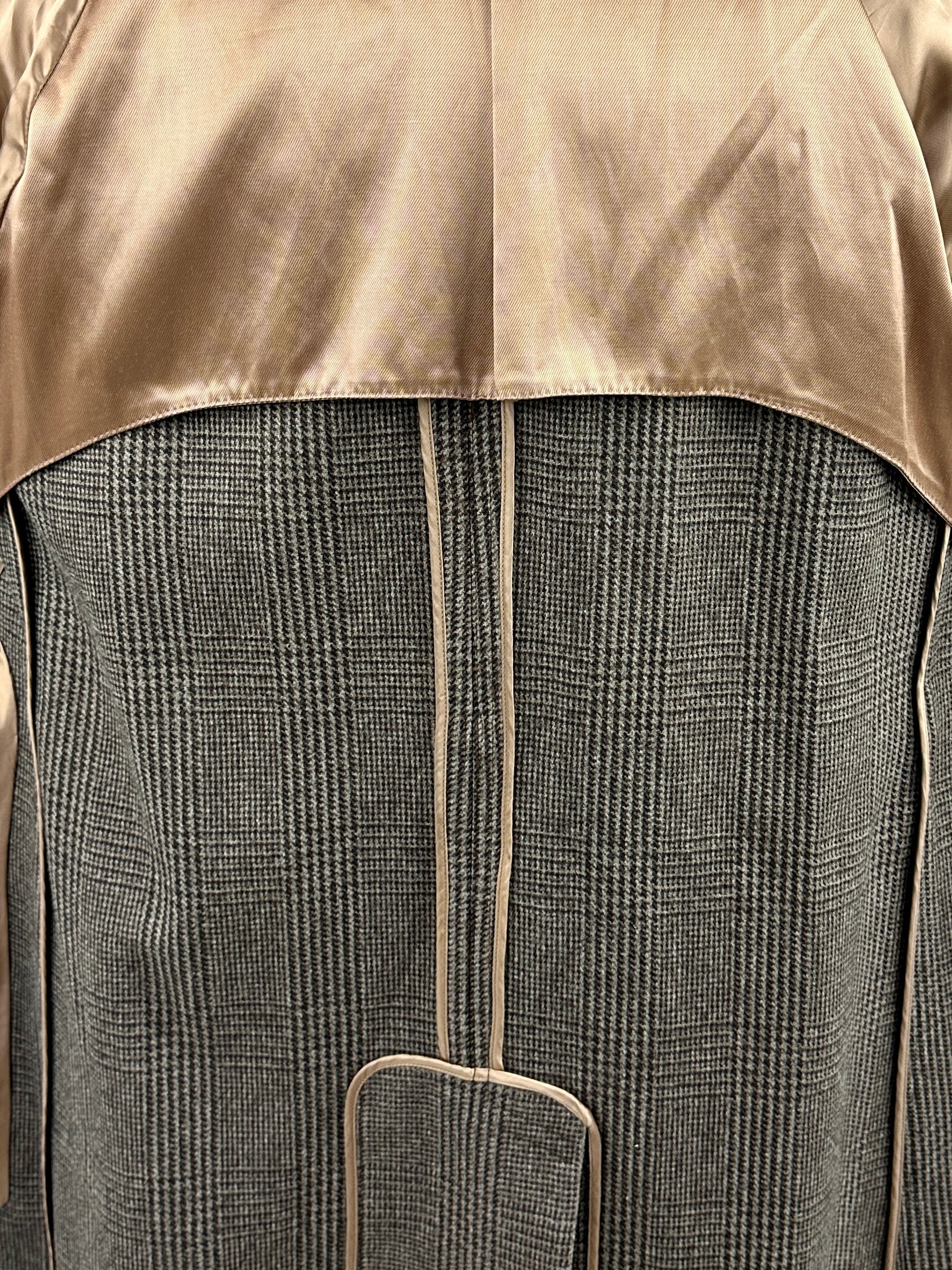
unlined
Unlined suits are lighter and more breathable, making them ideal for warmer climates or during the summer months. Secondly, the absence of lining often allows for a more natural and relaxed fit, enhancing the overall comfort and mobility. Also, unlined suits tend to have a more casual and modern appearance, making them suitable for both formal and semi-formal occasions, providing versatility and value for your wardrobe.
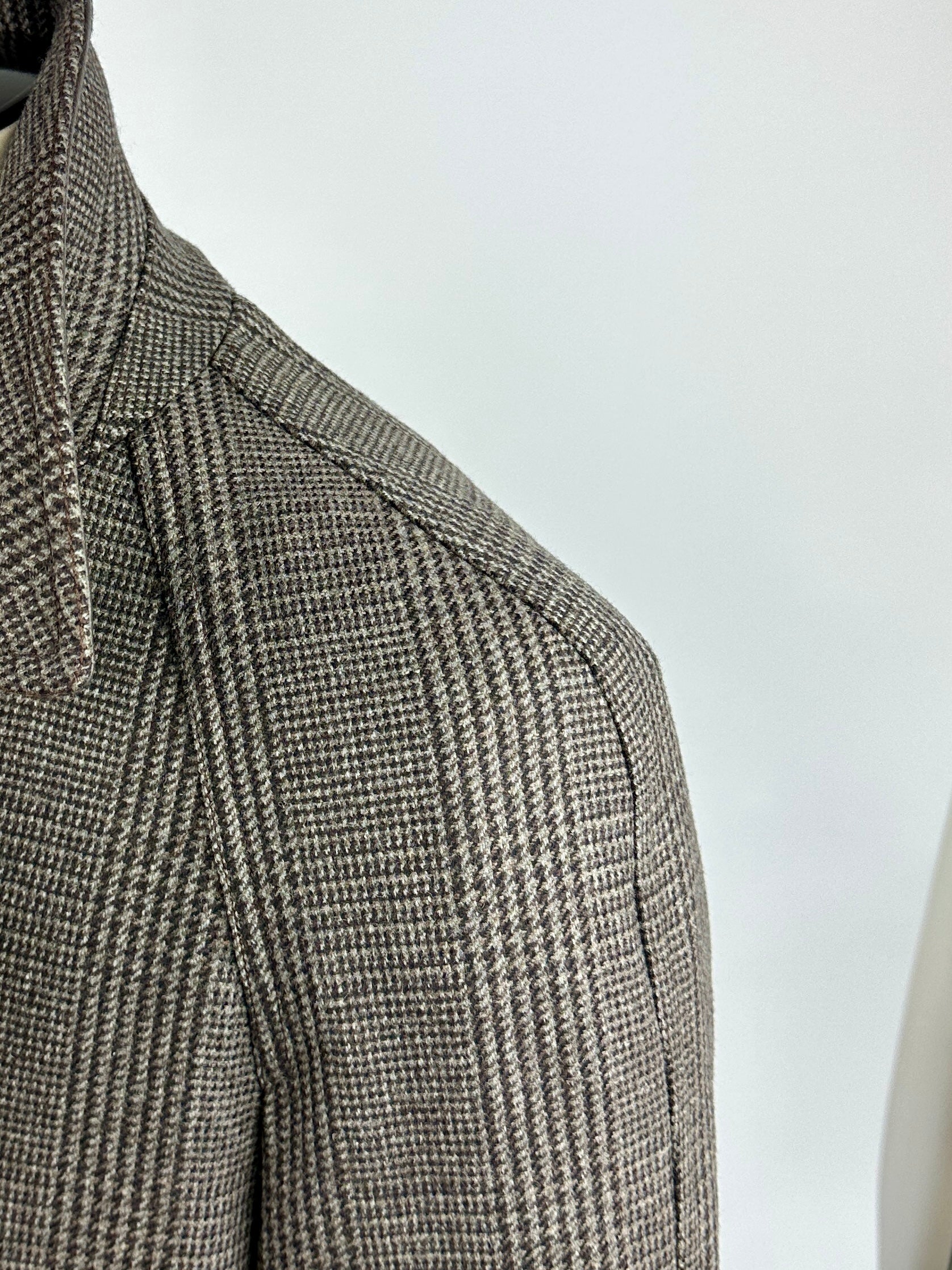
Raglan Shoulders
The raglan shoulder, a timeless innovation in fashion, was introduced in the early 19th century by Lord Raglan himself. This revolutionary design features sleeves that extend seamlessly from the collar, eliminating the need for a shoulder seam. The seamless line created by the raglan shoulder offers a sleek and elegant appearance. It lends a subtle, sporty charm to any garment, making it a popular choice for both formal and casual wear.
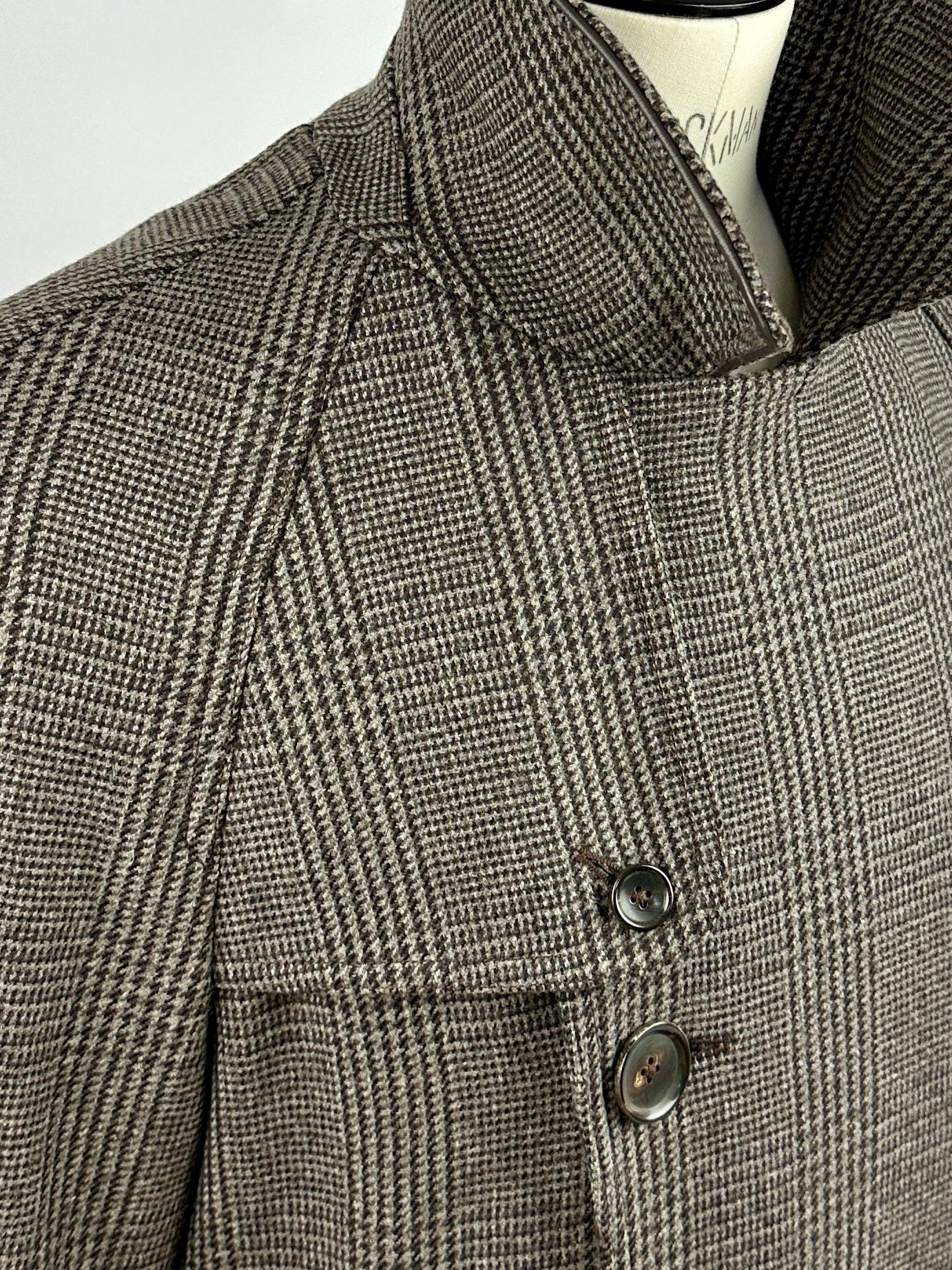
Long Milanese Buttonhole
The elegant, longer brother of the Milanese. With its thin and extra long gimp cord inside, this is one of the most challenging buttonholes to make by hand. Even a highly skilled tailor will take about 20 minutes to finish it.
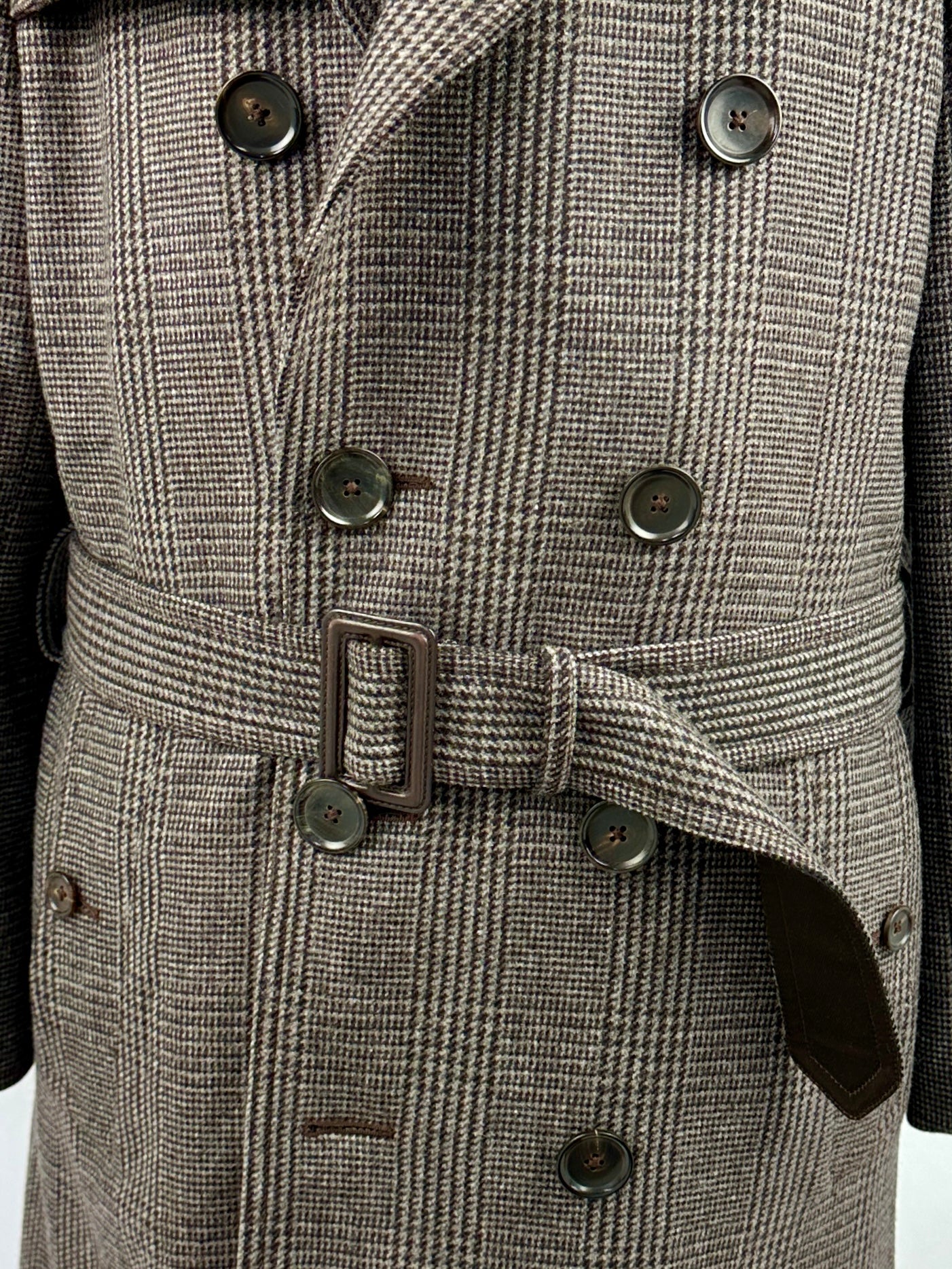
Double Breasted Closure
Contrary to popular belief, the double-breasted jacket originated as casual wear in the early 19th century, also known as the reefer jacket. It was considered very casual and was worn by people at sporting and national events.

Gun Flap
The gun flap, also known as a storm flap, has a fascinating history originating from military attire. First introduced during World War I, this practical feature was designed to shield soldiers from the harsh elements and keep their firearms dry in inclement weather. Beyond its functional purpose, the gun flap adds a touch of sophistication to the overcoat's design. Today, it is considered a distinctive style detail, lending a sense of refinement and heritage to the overall look.

Belt
The belt on an overcoat has a rich history dating back to the late 19th century. Originally used as a functional element to cinch the coat at the waist, it gained popularity for its practicality and style.
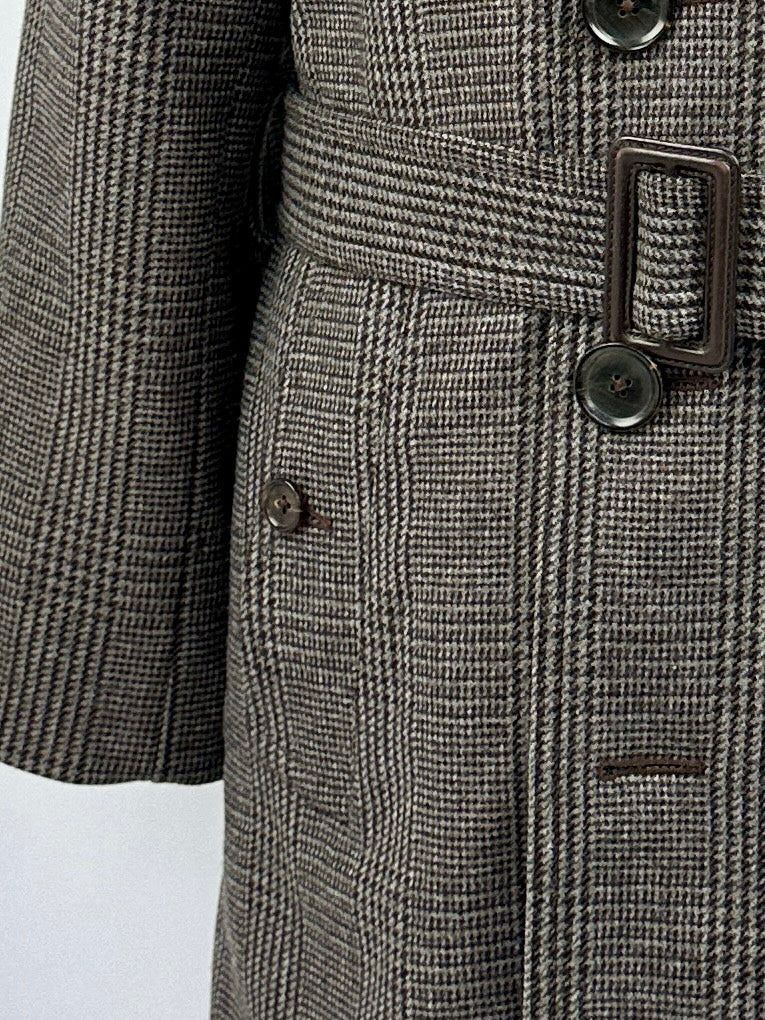
Side Pockets
Also known as 'slant' pockets, slash pockets commonly appear on pants, slacks, and jackets. These pockets are set into the garment on an angle, allowing the wearer to slide their hands in and out easily.

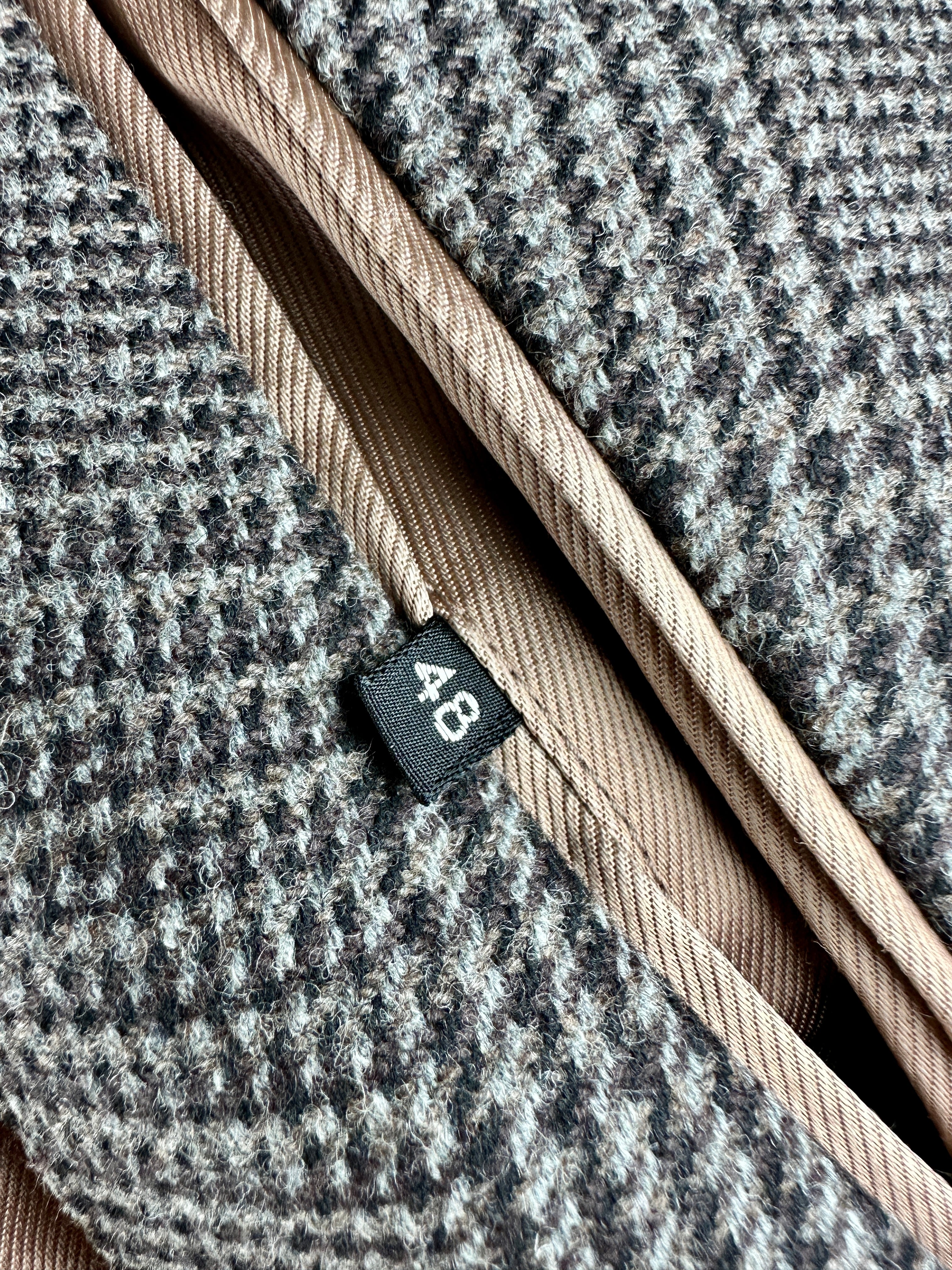
size
48 IT / 38 US / Medium


 Curator's Description
Curator's Description Materials
Materials